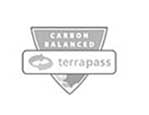Cold Weather Spray Foaming
If you have a project to do, cold weather makes it all the more pressing to get it done fast. The cost of energy means you lose a lot of money you could keep every day you delay.
But temperatures are important for spray foam. That alone can make it seem like you can’t spray foam in the winter.
Did you know that thousands of people install Foam it Green throughout the coldest months of the year? Here’s how you can get great results any time and every time, regardless of what’s happening outside.
How to Get Surface Temps Between 65-85 degrees:
If the surface is too cold, your foam will pull away from the surface because it didn’t bond or the foam won’t rise very high because the cold saps the heat from the reaction.
- Use bullet heaters, salamanders, or space heaters to warm the surface. Pay attention to the actual temperature of the surface and not just the area. Surfaces take longer to warm than the area right around the space heater.
- Use a very thin flash coat of the foam to heat up the surface. The foam gives off heat as it cures. You harness this chemical reaction to warm the surface you’re spraying. Then you spray over the now warmer surface.
How to Get Tank Temps Between 65-85 degrees:
If the chemicals in the tanks are too cold, you won’t get the 1 to 1 mix you want for great spray foam.
- Bring the tanks indoors and keep them inside your home or a well heated area for 24-48 hours. It’s a lot easier to just keep them warm from the start than to bring cold steel and chemicals back up.
- Use warm water baths to get the tanks’ temps up. Periodically shake the tanks to evenly distribute the temperature throughout the chemical. Pay attention to the temperature strip so you know when they’re ready. Keep in mind the steel tanks will get up to temperature faster than the chemicals inside.
Just follow the instruction manual, use test patches, and check your work often. Now you too can Foam it Green all year round to stop high energy bills and cold rooms and floors.









